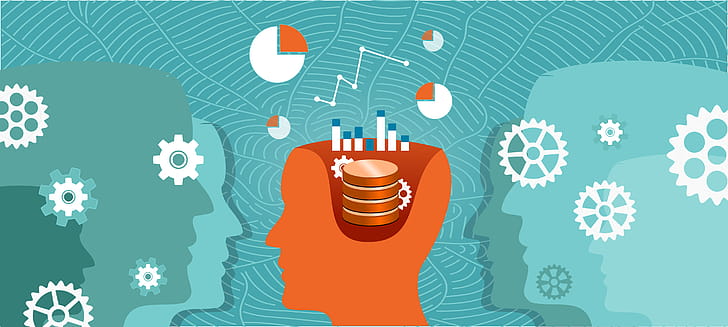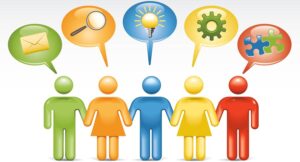What Is Learning Technology ?

What Is Learning Technology :- Learning technology encompasses a broad spectrum of communication, information, and technological resources aimed at enriching the learning, teaching, and assessment process. This encompasses various tools, including computer-based learning modules and multimedia resources designed to complement traditional classroom instruction.
Among the key categories of learning technology tools are tutorials, simulations, productivity tools, and communication platforms such as email. Tutorials provide structured learning experiences for acquiring new concepts, while simulations replicate real-world experiments or scenarios to facilitate experiential learning. Productivity tools, such as word processors and spreadsheets, though not specifically tailored for education, serve as valuable resources for organizing and presenting information.
At its core, learning technology encompasses an array of digital tools and media utilized in educational settings. For educators, the integration of learning technologies should align with overarching teaching and learning objectives. Effective learning technologies should foster student self-responsibility, facilitate individual and collaborative learning experiences, and empower learners to engage in critical thinking and apply knowledge beyond the confines of the classroom.

What is learning technology? Some definitions.
Learning Technology encompasses the application of technology to enhance teaching, learning, and assessment. This includes computer-based learning, multimedia materials, and the utilization of networks and communication systems to support learning activities.
Learning Technology encompasses a wide range of applications, historically classified under various acronyms such as CAI (Computer Aided Instruction), CAL (Computer Aided Learning), CBL (Computer Based Learning), and CBT (Computer Based Training).
With the advent of newer technologies, additional acronyms have emerged, such as CAA (Computer Aided Assessment) and CMC (Computer Mediated Communications).
A critical aspect of Learning Technology is the Human-Computer Interface (HCI), which ensures ease of interaction for learners.
The main application areas for Learning Technology include drill and practice, tutorials, information retrieval systems, simulations, microworlds, cognitive tools for learning, productivity tools, and communication tools.
Additionally, there is a category focused on learning about computers, which involves using programming languages and software to control equipment.
Why is Educational Technology in Education Important?
Educational technology plays a pivotal role in modern education by empowering teachers to seamlessly integrate new technologies and tools into their classrooms. This integration facilitates the enhancement of learner-centered approaches, enabling teachers to cater to diverse learning styles and needs effectively. By leveraging educational technology, teachers can engage students in novel, innovative, and equitable learning experiences that foster critical thinking, creativity, and collaboration.

Furthermore, educational technology provides teachers with opportunities to broaden their professional network and connect with fellow educators on a national and global scale. This collaborative environment enables the sharing of best practices, resources, and insights, ultimately enriching teaching practices and promoting continuous professional growth. In essence, educational technology serves as a catalyst for transformative teaching and learning experiences, equipping teachers with the tools and resources needed to nurture the next generation of lifelong learners.
Features and characteristics of educational software
Learning technology encompasses a diverse array of tools and systems designed to enhance teaching, learning, and assessment. Let’s break down the key components:
- Drill and Practice: Structured reinforcement of previously learned concepts through question-answer interactions, often incorporating games to increase motivation.
- Tutorials: Presentation of new concepts in a structured format, including worked examples and opportunities for self-assessment with feedback. Intelligent Tutoring systems offer adaptive learning experiences tailored to individual learners.
- Information Retrieval Systems: Storage of knowledge in structured formats, allowing learners to browse or search for information. This includes online databases, dictionaries, encyclopedias, hypertext, and hypermedia reference systems.
- Simulations: Modeling of experiments or real-life scenarios, typically using interactive graphics to visualize processes and explore the effects of changing parameters.
- Microworlds: Creation of problem-solving environments, inspired by cognitive psychology principles, to encourage exploration and learning. Examples include Logo language for math education.
- Cognitive Tools for Learning: Tools that enable learners to construct their understanding of new concepts, often through graphical representations and interactive activities. Expert systems and authoring tools facilitate knowledge sharing among learners.
- Productivity Tools: Applications such as word processors, spreadsheets, databases, graphics, desktop publishing, and presentation packages. While not specific to learning technology, they enhance learning by improving the quality of learning processes and student productivity.
- Communication Tools: Platforms for computer-mediated communication, including email, electronic conferencing, video conferencing, and the World Wide Web. These tools facilitate collaboration, information sharing, and submission/publication of assignments.

Each of these components plays a vital role in leveraging technology to support teaching and learning, promoting engagement, collaboration, and knowledge acquisition in educational settings.





